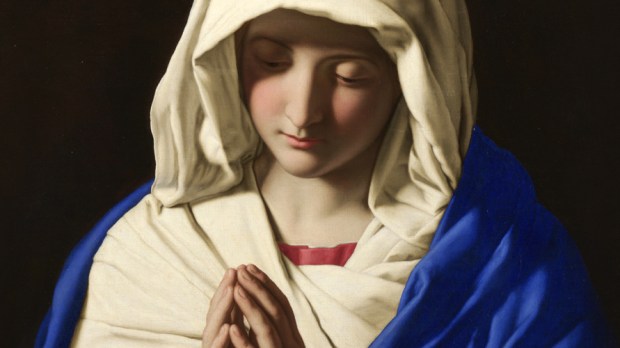I didn’t know my husband for long when we started dating.
I remember I was working at a greenhouse, watering rows of flowers, and shot him a text: “I just watered a huge bumblebee! Don’t think it’s happy with me.”
He responded, “Did you know that bumblebees are a symbol of Our Lady? St Anthony of Padua uses that image!”
I’d like to say that’s when I realized I was going to marry him. It wasn’t, quite, but it sure got my attention. Since then, I always think of Our Lady when I see a bumblebee, and I’ve discovered a handful of other commonplace sights that, for centuries, have reminded people of her too. She’s all around us, it seems.
The Lily of the Valley: Flowers have always been used to symbolize Our Lady–the rose for its beauty, the iris, whose thin, pointed leaves represent the swords that pierce her heart–but the lily of the valley is the best image of them all. In May, Mary’s month, it is just coming into its own. The flower itself is small and humble, and grows in the shade, overshadowed by trees and underbrush, but the air all around it is marked by its scent. You always know you’re near one of these flowers, even before you spot it, because of the unmistakable perfume. Its flowers, tiny white bells, are said to represent Mary’s tears.
The Ladybug: According to the legend, medieval farmers were facing starvation, as their crops were being eaten by aphids. They prayed to Mary, and she sent a great red cloud of ladybugs, which ate the aphids, and saved the people. (To this day, people know how beneficial it is to have ladybugs in a garden. They eat all kinds of pests. You can even order thousands of live ladybugs online, if you’d rather not use pesticides!) Their color represents Christ’s saving blood, and their seven spots represent Our Lady’s sorrows.
The Moon and Stars: The moon, the brightest thing in the sky except for the sun, is a wonderful symbol of Mary, since it doesn’t make its own light, but reflects the light of the sun. Mary is also called the Star of the Sea, a title from the ancient hymn, “Ave Maris Stella,” probably in reference to the Polaris, the north star, which guided sailors in the right direction, even in the dead of night. Then, there’s the planet Venus, which is called the morning star. The Litany of Loreto gives Mary the same title. Venus appears right before the sunrise, heralding in the dawn, just as Our Lady came before God’s Son, the light of the world.
The Bumblebee: St. Anthony of Padua’s explanation of this image is a bit heavy-handed, as allegories go, but it’s very endearing. He says, “This good bee was ‘small’ in her humility, ‘rounded’ in contemplation of heavenly glory (which has no beginning or end), ‘dense’ in charity (since she who bore Charity in her womb for nine months could not lack charity), ‘compact’ in poverty, and purer than others by her virginity.” He also speaks of how “The bee is small among flying things. While many virtues shone out excellently in blessed Mary, humility shone with even more excellence.” It’s a lovely image, and an an easy one to remember.
Your own town: We hear the name “Fatima,” or “Lourdes,” and Our Lady comes to mind, since we refer to her with the title of the sites of her apparitions. But Catherine Doherty, foundress of Madonna House, says we can be very free with her titles. “In Russia where I grew up and in many parts of Europe, women are apt to call on Our Lady by the name of their village or country.” I recently moved to the city, and it’s been nice, driving through the poorest, most run down parts of town, to be able to say “Our Lady of Worcester, pray for us!” Then anything where you live can bring her to mind–the town hall, the road signs, your address.
Our Lady doesn’t leave us, but she can be so quiet that it’s easy to forget about her. It’s nice to see little signs of her presence, above, below, and all around us.

